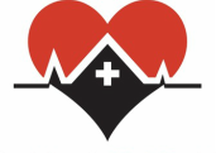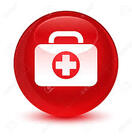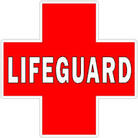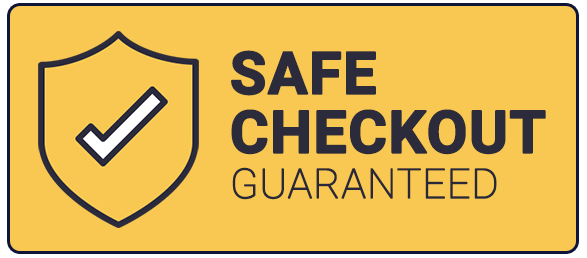THE RESULT OF NOT BEING CPR-CERTIFIEDIf you are looking to get your cardiopulmonary resuscitation (CPR) certification, it is best to choose a CPR training providers with proven expertise. This allows the individual to become CPR certified quickly while allowing the individual to learn the proper methods to administer life-saving assistance to those suffering sudden cardiac arrest (SCA).
Cardiac arrest is an electrical irregularity of the heart which occurs due to a irregular heartbeat. When cardiac arrest occurs, the pumping action of the heart is disrupted which prevents the heart allowing blood to go the brain, lungs, and other organs. This is what causes the cardiac arrest victim to become unresponsive. if the individual does not receive CPR in a few minutes after cardiac arrest then they can die. The American Heart Association (AHA) states that cardiac arrest effect greater than 350,000 individuals annually. Further the AHA has reported that the average survival rate for out-of-hospital cardiac arrest victims is 12 percent. The AHA has additionally indicated that only about one in three cardiac arrest victims survives when a cardiac arrest incident is witnessed by a bystander. In some situations cardiac arrest can be mistaken for a heart attack. But cardiac arrest and heart attack are two completely different medical emergencies. Unlike cardiac arrest, a heart attack occurs when there is a blockage that prevents blood from flowing to the heart. Subsequently, it is the the heart attack that can lead to cardiac arrest. The heart attack may be further defined as the death of heart muscle tissue as a result of the loss of blood supply. If your CPR trained, then you will know how to respond to cardiac emergencies. The individual will then have the skills to provide life-saving assistance to increase the cardiac arrest of heart attack victim's chance of survival. Why Should You Become CPR-Certified? For the cost of a single CPR class, an individual can contribute greatly to their local community. CPR training provides significant value to individuals of all ages. The training provides the individual with the tools to support emergency care victims until advanced medical personnel have arrived. CPR training can subsequently enable anyone to actually save lives. A normal CPR training class will provide the student with knowledge regarding the following topics:
Why Should You Choose Help-A-Heart CPR for CPR Training? When it comes to choosing a CPR class there are a few factors to consider:
Help-A-Heart CPR is a top provider of CPR classes in South-Central Texas and San Antonio. while offering a convenient training schedule with weekday and weekend classes. Our CPR classes are also designed for student's of all ages. The classes encourage collaboration and engagement and enable student's to enjoy a dynamic learning experience. The question is: Can you afford to NOT enroll in a CPR class?. With Help-A-Heart CPR, individuals can receive extensive CPR training while gaining the medical skills needed to offer CPR and/or First Aid assistance to anyone experiencing cardiac arrest. To learn more about Help-A-Heart CPR and our CPR classes, please call us at 210-380-5344.
Comments
AUTOMOBILE FIRST AID KIT 101While most people have some type of first aid kit in their home; many people are lacking a first aid kit in their automobile. Having a well-stocked and ready-to-use first aid kit is one of the best ways you can prepare for emergencies. Medical emergencies may occur near a car while only makes it that more important to carry a first aid kit with you at all times. First Aid kits can be pre-purchased, however, the ability to customize your first kit yourself is a great advantage. In this article, we will review the items that you need to keep in the first aid kit in your car.
3. Make Sure You Have Items for Serious Emergencies. The following are items that you may need to use in medical emergencies such as choking, cardiac arrest, drowning, severe allergic reactions, and car accidents.
4. Include an Easy To Read First Aid Manual.
Hints for Using The First Aid Kit. Here are a few tips you can follow to use the items in your first aid kit the correct way.
LASTLY, create your car's first aid kit and take the next step with Help-A-Heart CPR. In order to ensure that you know how to use your first aid kit, further prepare yourself by enrolling in a CPR and Basic First Aid certification class from our team here at Help-A-Heart CPR. Look into our classes offered daily and online and choose a date and time that accommodates your busy schedule. DO YOU WANT TO BE A LIFEGUARD?Have you thought about being a lifeguard or interested in a summer job working as a lifeguard?
The role of the lifeguard is extremely important as they can truly make a difference. The U.S. Lifesaving Association (USLA) has indicated that the chance that a person will drown while attending a beach protected by a USLA-affiliated lifeguard is 1 in 18 million – or less than 1%. On the contrary, the International Life Saving Federation has stated that approximately 1.2 million people, or more than two people every minute, will die annually due to drowning. These statistics highlight the importance of lifeguards in helping drowning victims and delivering emergency assistance. While becoming a lifeguard does have a great deal of responsibility, it is also exciting and rewarding to become part of a team whose job is to allow people to have fun and enjoy their time in the water in a safe fashion. With that in mind, let's examine three things that prospective lifeguards to become aware of before they actually become lifeguards. 1. Lifeguards Require Extensive Training. The American Red Cross provides many lifeguard training classes that teach you how to recognize and prevent injuries, rescue skills that are necessary both in water and on land and life-saving first aid and cardiopulmonary resuscitation (CPR) training. Additionally, the Red Cross requires individuals to be at least 15 years old before enrolling in a lifeguard class. The Red Cross also mandates that individuals pass a pre-course swimming skills test prior to signing up for a lifeguard class. If you intend to become a lifeguard, enroll in the best training available. That way, you can gain the real-world skills that you’ll need to administer critical assistance in emergencies. 2. Lifeguards must be ready to handle a wide range of emergencies. Lifeguards must be capable of providing support in many types of emergencies, including the following:
3. Being a Lifeguard, everyday is different. When a lifeguard is on duty, many various things can occur occurring a medical crisis or emergency that requires basic level or advanced medical care. As a lifeguard, it is important to constantly search for ways to always improve and ensure time devoted to maintaining his or her training certifications. Not only does this allow the lifeguard to be consistent with the latest lifesaving techniques, but also exposes the individual to extensive expertise in administering life-saving techniques. Training programs are available that allow lifeguards to become certified in a number of areas, including:
|
AuthorDr. Tracy A. Jones is the CEO of Help-A-Heart CPR, LLC and an American Heart Association, ASHI, and American Red Cross Master Program Trainer, Instructor, & AHA Faculty Member located in San Antonio, Texas. Archives
June 2024
Categories |
Help-A-Heart CPR, LLC | 1747 Citadell Plaza Suite 101 | San Antonio, Texas 78209 | (210) 380-5344 | [email protected]
Copyright © Help-A-Heart CPR, LLC 2024
100% Certification Acceptance
We promise your employer, school, or agency will accept the certification card we issue to you. If there is a question of acceptance or validity, simply send us an email at [email protected] with full details. We will reach out to the individual/entity and provide accreditation information. If still there’s a question, we will provide you with a full refund of your class fee. It’s that simple.
We promise your employer, school, or agency will accept the certification card we issue to you. If there is a question of acceptance or validity, simply send us an email at [email protected] with full details. We will reach out to the individual/entity and provide accreditation information. If still there’s a question, we will provide you with a full refund of your class fee. It’s that simple.
|
Communities Served
ALABAMA: Birmingham
ARKANSAS: Fayetteville, Hot Springs, Jonesboro, Little Rock NEW MEXICO: Albuquerque TENNESSEE: Knoxville TEXAS: Amarillo, Arlington, Austin, Bandera, Bastrop, Boerne, Brownsville, Comfort, Converse, Corpus Christi, Dallas/Ft. Worth, Del Rio, Dripping Springs, El Paso, Floresville, Fredericksburg, Georgetown, Harlingen, Houston, Junction, Katy, Kerrville, Kingsville, Kingwood, Laredo, Lubbock, Lufkin, McAllen, Midland, New Braunfels, Odessa, Pleasanton, Round Rock, San Angelo, San Marcos, Schertz, Seguin, Taylor, Temple, Texarkana, Tyler, Universal City, Victoria, Waco, The Woodlands |
Why Choose Help-A-Heart CPR?
1. Flexible Scheduling
2. On and Off Location Training Available 3. Casual, Fun Atmosphere 4. Best Price Guarantee 5. All Instructors are AHA and/or ARC certified 6. 5 Star Google Reviews 7. Blended Learning (Online & Skills Check) Available 8. Meets OSHA & College CPR Requirements 9. Get Certified Within 3-4 Hours 10.Certification Is Good For Two Years 11. Official AHA/ARC/ASHI Training Site 12. High Quality Safety Training! |










